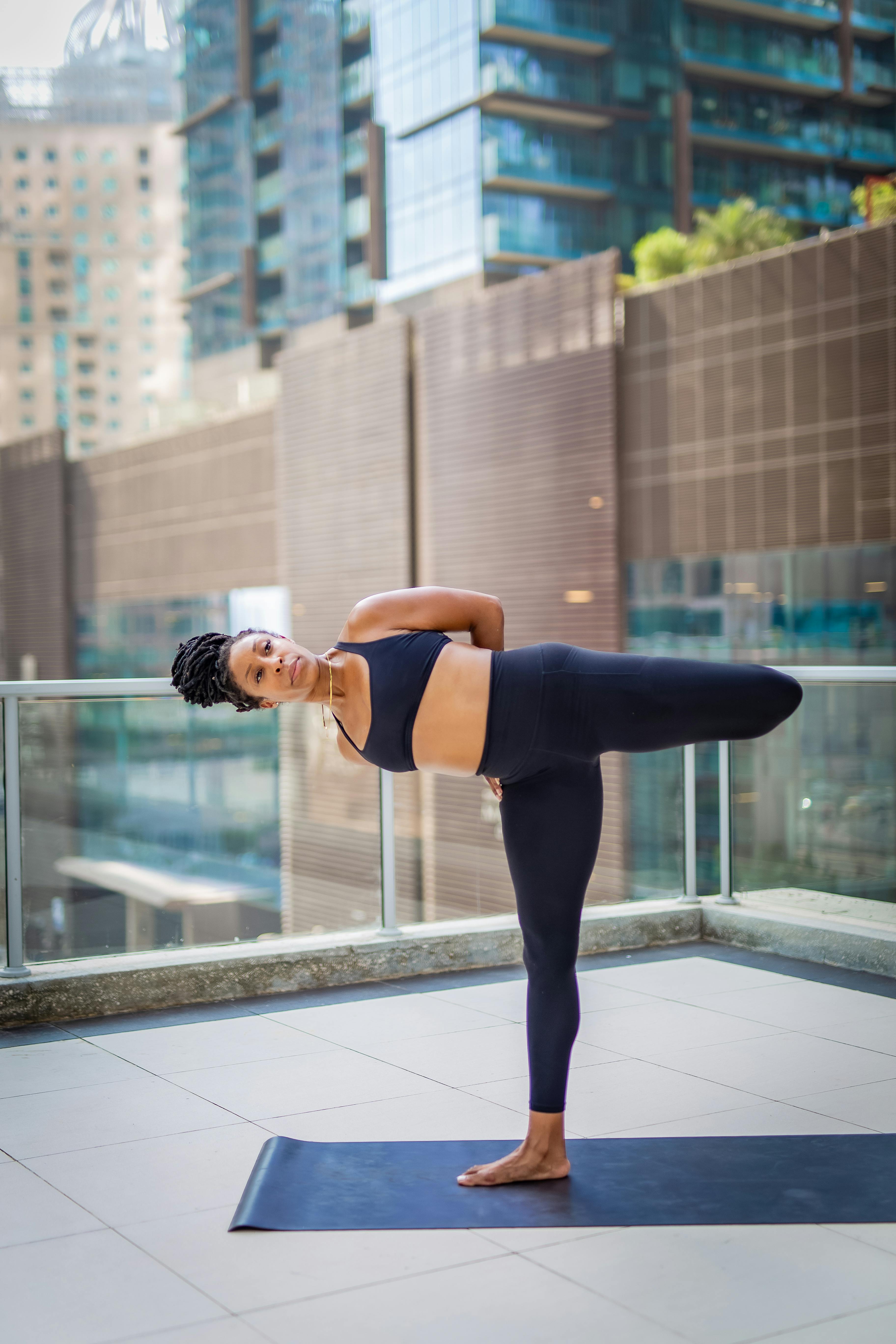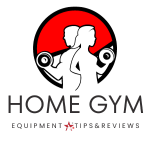As an avid fitness enthusiast, my interest in gym machines extends beyond their functionality to the specific components that comprise them. One such component that often goes unnoticed, yet plays a crucial role in ensuring an effective workout, is the gym machine weight plate. These weight plates, available in a myriad of sizes and materials, are essential for adjusting the resistance levels and intensity of various exercises. In this article, I will explore the different types of gym machine weight plates, their costs, and compare their features to provide a comprehensive understanding of their significance in the realm of fitness equipment.

Types of Gym Machine Weight Plates
Standard or Regular Weight Plates
Standard or regular weight plates are the most common and widely used type of weight plates in gyms. They are typically made of cast iron and are available in various sizes and weight increments. These plates have a center hole with a standard diameter that fits onto the bars of most weightlifting machines. Standard weight plates are suitable for both beginners and advanced lifters, and they can be used for a wide range of exercises.
Olympic Weight Plates
Olympic weight plates are designed specifically for Olympic barbells, which have a larger diameter than standard barbells. These plates are made of cast iron or steel and are typically more accurate in terms of their stated weight. Olympic weight plates also have a center hole with a larger diameter, allowing them to fit onto Olympic barbells securely. They are generally more expensive than standard weight plates, but they offer greater durability and can accommodate heavier loads.
Fractional Weight Plates
Fractional weight plates are small, lightweight plates that are used for making micro-adjustments to the load during weightlifting. These plates are typically made of cast iron or steel and come in increments as low as 0.25 pounds. Fractional weight plates are especially useful for progressive overload training, where small incremental increases in weight are added to the barbell over time. They are commonly used by advanced lifters or individuals who are focused on small increments of strength gains.
Bumper Plates
Bumper plates are weight plates that are made almost entirely of rubber, with a small steel or iron insert in the center. These plates are designed to be dropped from overhead without causing damage to the floor or the plates themselves. Bumper plates are commonly used in Olympic weightlifting and CrossFit workouts, where exercises such as snatches and clean and jerks require the barbell to be dropped from above. They are available in various weights and are color-coded for easy identification.
Rubber Coated Weight Plates
Rubber coated weight plates have a layer of rubber surrounding the cast iron or steel core. This rubber coating serves as a protective layer that reduces noise and prevents damage to the floor and the plates themselves. Rubber coated plates are commonly used in commercial gyms and fitness centers where noise reduction is important. They are available in both standard and Olympic sizes and are generally more expensive than regular iron weight plates.
Iron Weight Plates
Iron weight plates, also known as cast iron weight plates, are made entirely of solid iron. They are known for their durability and longevity, making them suitable for heavy lifting and high-intensity workouts. Iron weight plates come in various sizes and weight increments and can be used with both standard and Olympic barbells. They are a popular choice among weightlifters and powerlifters due to their reliability and affordability.
Steel Weight Plates
Steel weight plates are similar to iron weight plates in terms of their composition but are made of steel instead of iron. Steel weight plates are usually more accurate in terms of their stated weight and are less susceptible to rust and corrosion. They are commonly used in commercial gym settings and are available in both standard and Olympic sizes. Steel weight plates are generally more expensive than iron weight plates but offer greater durability and precision.
Cast Iron Weight Plates
Cast iron weight plates are a type of iron weight plate that is produced through a casting process. This process involves pouring molten iron into a mold, resulting in plates with a smooth and consistent finish. Cast iron weight plates are known for their durability and are often used in home gyms or commercial fitness centers. They are available in various sizes and weight increments and can be used with both standard and Olympic barbells.
Vinyl Weight Plates
Vinyl weight plates are weight plates that are coated with a vinyl layer. This vinyl coating serves as a protective layer that prevents damage to the floor and reduces noise when the plates are moved or dropped. Vinyl weight plates are typically less expensive than other types of weight plates and are often used in home gyms or light commercial settings. They are available in various sizes and weight increments and can be used with both standard and Olympic barbells.
Barbell and Dumbbell Collars
Barbell and dumbbell collars are not weight plates themselves, but they play a crucial role in securing weight plates onto the barbell or dumbbell. These collars are typically made of metal and have a locking mechanism that prevents the weight plates from sliding or falling off during exercise. Barbell and dumbbell collars come in different designs, including spring collars, clamp collars, and spinlock collars. They are essential for ensuring the safety and stability of the workout equipment.
Characteristics and Features of Gym Machine Weight Plates
Size and Diameter
Weight plates come in various sizes and diameters, depending on the type of barbell they are designed to fit. Before purchasing weight plates, it is important to consider the size and diameter of the plates to ensure compatibility with your barbell or weightlifting machine. Standard weight plates typically have a 1-inch center hole diameter, while Olympic weight plates have a 2-inch center hole diameter. It is essential to choose weight plates that fit securely onto the barbell or machine to prevent any accidents or damage.
Weight Increments
Weight plates are available in different weight increments, which determine the load that can be added to the barbell or machine. Common weight increments for standard weight plates range from 2.5 pounds to 50 pounds, while Olympic weight plates can go up to 100 pounds or more. Fractional weight plates are available in smaller increments, such as 0.25 pounds or 0.5 pounds, for making precise adjustments to the load. Choosing weight plates with the right weight increments is crucial for progressive overload training and achieving your fitness goals.
Material Composition
Weight plates are typically made of cast iron, steel, or a combination of materials such as rubber-coated plates. Cast iron weight plates are durable and affordable, making them a popular choice among fitness enthusiasts. Steel weight plates offer greater accuracy in terms of their stated weight and are less prone to rust or corrosion. Rubber-coated weight plates provide added protection to the plates and the floor and reduce noise during workouts. The material composition of weight plates plays a role in their durability, performance, and price.
Color Coding
Many weight plates, especially bumper plates, are color-coded to indicate their weight. This color-coding system helps users easily identify and select the desired weight plates for their workout. For example, Olympic bumper plates often follow the International Weightlifting Federation (IWF) color scheme, with each weight increment having a specific color. Color coding can be particularly useful in group training environments or when performing exercises that require quickly changing the weights.
Hole Size
The hole size of weight plates is an important consideration, as it determines whether the plates will fit securely onto the barbell or weightlifting machine. Standard weight plates typically have a 1-inch hole diameter, while Olympic weight plates have a 2-inch hole diameter. Some weight plates may also have a slightly tapered hole design to ensure a snug fit. It is crucial to choose weight plates with the correct hole size to avoid any wobbling or instability during workouts.
Grip/Handle Design
Some weight plates, particularly larger ones, may have built-in grips or handles that make them easier to carry, load, and unload onto the barbell or machine. These grips or handles can vary in design, with some weight plates having a single handle in the center, while others may have multiple handles along the edges. Weight plates with ergonomic grip designs can enhance your workout experience and provide added convenience when handling heavy loads.
Durability and Longevity
The durability and longevity of weight plates are important factors to consider when making a purchasing decision. Weight plates that are made of high-quality materials such as cast iron or steel tend to be more durable and resistant to wear and tear. Rubber-coated weight plates provide an extra layer of protection that can extend their lifespan. It is also essential to consider the quality of the finish and the manufacturing process to ensure that the weight plates can withstand heavy use over time.
Plate Thickness
The thickness of weight plates can impact the overall weight distribution and stability of the barbell or weightlifting machine. Thicker plates can potentially limit the total weight that can be loaded onto the barbell or machine, as they take up more space on the sleeves or weight pegs. On the other hand, thinner plates allow for more weight to be added, but they may also be more prone to bending or warping under heavy loads. The appropriate plate thickness will depend on the specifications and limitations of your equipment.
Plate Surface
The surface of weight plates can vary depending on the material and the manufacturing process. Smooth surfaces may be more visually appealing and easier to clean, while textured surfaces can provide better grip and prevent the plates from slipping during exercises. Some weight plates may also have raised or engraved markings indicating the weight for easy identification. The choice of plate surface depends on personal preference and the specific requirements of your workout routine.
Noise and Vibration
Weight plates can produce noise and vibrations when they are dropped or moved, especially if they are not properly secured or if they have a hard surface. Rubber-coated weight plates help reduce noise and vibrations by absorbing the impact and providing a softer landing surface. Bumper plates, specifically designed for dropping from overhead, have a rubber surface that significantly minimizes noise and vibrations. Considering noise and vibration levels can be crucial, especially when working out in shared spaces or noise-sensitive environments.

Benefits of Using Gym Machine Weight Plates
Versatility
Weight plates offer versatility in terms of the exercises they can be used for. Whether you are performing compound lifts like squats and deadlifts or isolation exercises like bicep curls and tricep extensions, weight plates can be used to provide resistance and challenge your muscles in various ways. They can be easily added or removed from the barbell or machine, allowing you to customize the load based on your strength and fitness level.
Progressive Overload
Progressive overload is a fundamental principle in building strength and muscle mass. By gradually increasing the load over time, weight plates enable progressive overload, which leads to gains in muscular strength and size. Weight plates with small weight increments, such as fractional plates, allow for precise adjustments to the load, making it easier to progressively increase the intensity of your workouts.
Muscle Activation
Using weight plates in resistance training activates multiple muscle groups, stimulating muscle growth and improving overall strength. Whether you are targeting your lower body with squats and lunges or working on your upper body with bench presses and rows, weight plates provide the resistance needed to engage the muscles and promote muscle development. The versatility of weight plates allows for a wide range of exercises that target different muscle groups.
Safety and Stability
Weight plates play a crucial role in providing stability and safety during weightlifting exercises. The additional weight provided by the plates helps stabilize the barbell or machine, reducing the risk of imbalance or tipping. Weight plates should be securely fastened onto the equipment using appropriate collars or locking mechanisms to ensure that they do not slide or fall off during exercise. The stability offered by weight plates enhances the safety of your workout and prevents accidents or injuries.
Improved Grip Strength
Handling weight plates, especially larger ones, can help improve grip strength. Gripping the edges or handles of weight plates requires a strong grip, which can be developed and strengthened through regular weightlifting. Improved grip strength can positively impact other exercises and activities that require a strong grip, such as pulling exercises, rock climbing, and sports involving racquets or bats.
Functional Training
Weight plates can be incorporated into functional training exercises that mimic real-life movements and activities. Functional training aims to improve strength, flexibility, and coordination for everyday activities or sports-specific movements. Weight plates can be used for exercises such as rotational twists, lunges, and overhead presses, which engage multiple muscle groups and enhance functional fitness.
Plate Loading Efficiency
Weight plates provide a convenient and efficient way to load and unload the barbell or weightlifting machine. The ability to easily add or remove weight plates allows for quick adjustments to the load during workouts. This efficiency is particularly beneficial when performing circuit training or supersets where time is limited, as it allows for seamless transitions between exercises without the need for significant downtime.
Variety of Exercises
Weight plates can be used for a wide range of exercises, enabling a diverse and comprehensive workout routine. From basic exercises like bench presses and squats to more complex movements like cleans and snatches, weight plates can be applied to various exercises to target different muscle groups and achieve specific fitness goals. The versatility of weight plates ensures that you can continually challenge your body and avoid exercise plateaus.
Progress Tracking
Weight plates provide a tangible way to track your progress and monitor your strength gains. By consistently increasing the load or number of weight plates used during exercises, you can document and measure your improvement over time. Progress tracking allows you to set realistic goals, stay motivated, and make informed decisions about your training program.
Cost-effectiveness
Weight plates are generally more cost-effective compared to other types of gym equipment, such as weight machines or cable systems. They are versatile and can be used with various barbells or machines, eliminating the need for multiple pieces of equipment. Weight plates can also be easily purchased individually or in sets, allowing you to gradually build your collection based on your budget and specific needs.
Considerations When Choosing Gym Machine Weight Plates
Machine Compatibility
When choosing weight plates, it is important to ensure that they are compatible with your weightlifting machine or barbell. This includes considering the size and diameter of the weight plates, as well as the size of the center hole. Standard weight plates are designed for standard barbells with a 1-inch diameter, while Olympic weight plates are designed for Olympic barbells with a 2-inch diameter. Checking the compatibility between your equipment and the weight plates will ensure a proper fit and prevent any safety or performance issues.
User Experience and Goals
Consider your experience level and specific fitness goals when selecting weight plates. Beginners may benefit from starting with lighter weight plates and gradually increasing the load as their strength and technique improve. Advanced lifters or individuals focused on strength gains may require a wider range of weight increments, including fractional weight plates. Furthermore, your specific goals, such as muscle building, strength training, or endurance improvement, should dictate the weight ranges and plate types that best align with your objectives.
Weight Range
Evaluate the weight range needed for your workouts and choose weight plates accordingly. Consider the maximum load your barbell or machine can accommodate and choose weight plates that allow for progressive overload. It is also beneficial to have weight plates in a variety of weight increments, such as 2.5 pounds, 5 pounds, 10 pounds, and larger increments, to provide flexibility in adjusting the load based on your strength and performance goals.
Space and Storage
Consider the space available in your home gym or workout area when choosing weight plates. Weight plates, especially larger ones or sets with multiple plates, can take up significant space. If you have limited space, opting for compact weight plate sets or plates with a smaller footprint may be more suitable. It is also important to consider storage options for weight plates, as they should be kept in a clean and organized manner to prevent damage and prolong their lifespan.
Budget and Cost
Weight plates come in a wide range of price points, depending on factors such as material composition, brand reputation, and weight plate type. Establishing a budget and considering cost-effectiveness can help narrow down your options. While price can be an indicator of quality and durability, it is important to balance cost with your fitness goals and expectations. Comparing prices across different brands and retailers can help you make an informed decision and find weight plates that fit within your budget.
Plate Count and Availability
Assess the number of weight plates you require and consider the availability of additional plates if needed. Some weight plate sets come with a predetermined number of plates, while others allow for individual customization and incremental purchase. Depending on the exercises you plan to perform or the intensity of your training, you may need a larger number of weight plates to accommodate your progress. Availability of additional plates, particularly if you plan to expand your collection in the future, is an important factor to consider.
Quality and Brand Reputation
Weight plates vary in quality, depending on the manufacturing process, materials used, and brand reputation. It is essential to choose weight plates from reputable brands that have a proven track record of producing high-quality products. Quality weight plates are more durable, accurate in terms of weight measurement, and resistant to wear and tear. Reading reviews, researching brands, and seeking recommendations from fitness professionals or experienced weightlifters can help guide your decision.
Safety Features
When selecting weight plates, consider any additional safety features they may offer. Some weight plates have built-in grips or handles that provide a secure and comfortable grip while handling them. Other weight plates may have textured surfaces or raised edges to prevent slipping or rolling on the floor. Assessing the safety features of weight plates can contribute to a more enjoyable and accident-free workout experience.
Maintenance Requirements
Weight plates, like any gym equipment, require regular maintenance to ensure optimal performance and longevity. Some weight plates may require more frequent cleaning or inspection due to their material composition or surface finish. Consider the maintenance requirements of weight plates and determine if they align with your preferences and capabilities. Weight plates with features like rubber coatings or protective finishes may require less maintenance compared to plates with exposed metal surfaces.
Warranty and Customer Support
Consider the warranty and customer support offered by the manufacturer or retailer when purchasing weight plates. A warranty provides assurance that the weight plates are free from defects in materials or workmanship and offers protection against early wear or damage. Additionally, reputable brands often provide reliable customer support and assistance in case of any issues or queries regarding the weight plates. A thorough review of warranty terms and customer support services can give you peace of mind with your purchase.

Common Mistakes to Avoid with Gym Machine Weight Plates
Using Incorrect Plate Sizes or Weight Increments
Using weight plates that do not match the specifications of your barbell or weightlifting machine can lead to instability, improper form, and potential injury. It is crucial to select weight plates with the correct size and weight increments that are compatible with your equipment.
Imbalanced Plate Distribution
Improper distribution of weight plates on the barbell or machine can result in an unbalanced load, affecting the stability and safety of your workout. Take care to evenly distribute the weight plates on both sides of the barbell or machine to maintain balance and prevent potential accidents.
Improper Plate Loading Technique
Incorrect plate loading techniques, such as forcefully dropping or banging weight plates onto the barbell or machine, can damage the equipment or compromise its structural integrity. Always load weight plates onto the barbell or machine carefully, ensuring a proper fit and secure attachment.
Neglecting Safety Measures
Failure to use appropriate collars or locking mechanisms to secure weight plates onto the barbell or machine can lead to accidents, especially during dynamic exercises or when the weight is dropped. Always check that weight plates are properly secured to prevent any movement or sliding during your workout.
Inadequate Warm-up or Cooling Down
Neglecting to warm up properly before using weight plates can increase the risk of injuries and reduce your overall performance. It is essential to incorporate a thorough warm-up routine to prepare your muscles and joints for the workout. Similarly, cooling down after a workout with weight plates can aid in recovery and reduce post-workout discomfort.
Ignoring Correct Form and Technique
Using weight plates without proper form and technique can result in inefficient movements, reduced effectiveness, and potential injuries. It is important to familiarize yourself with proper lifting techniques and seek guidance from fitness professionals or experienced weightlifters to ensure optimal performance and safety.
Neglecting Plate Maintenance and Cleaning
Failing to clean or maintain weight plates regularly can lead to the accumulation of dirt, sweat, or other contaminants, which can affect their performance and longevity. Regularly clean weight plates according to the manufacturer’s instructions and perform routine inspections to identify any signs of damage or wear.
Overloading the Machine
Exceeding the weight capacity of your weightlifting machine or barbell by overloading it with excessive weight plates can result in equipment failure or damage. Always adhere to the recommended weight limits provided by the manufacturer to prevent accidents and maintain the integrity of your equipment.
Not Consulting with Fitness Professionals
Neglecting to seek advice from fitness professionals, such as personal trainers or strength coaches, when choosing weight plates or designing a workout program can lead to suboptimal results or incorrect usage. Consulting with professionals who have expertise in weightlifting can help ensure that you are using the right weight plates and performing exercises correctly.
Not Adjusting Plates Properly
Failing to adjust weight plates to the appropriate height or position on the weightlifting machine may compromise your safety and limit the effectiveness of your workout. Ensure that weight plates are adjusted to the appropriate positions relative to your body and the movement being performed.
Maintenance and Cleaning Tips for Gym Machine Weight Plates
Regular Inspection and Cleaning
Regularly inspect weight plates for any signs of damage, such as cracks, chips, or loose rubber coatings. Clean weight plates using a mild detergent and water, avoiding abrasive cleaners or scrubbers that can damage the surface. Dry weight plates thoroughly before storage to prevent the accumulation of moisture.
Proper Storage and Handling
Store weight plates in a clean and organized manner to prevent damage and prolong their lifespan. Use weight plate racks or storage systems that keep the plates off the floor and prevent them from coming into contact with any hard or sharp surfaces.
Removing Rust or Corrosion
If weight plates develop rust or corrosion, gently scrub the affected areas using a wire brush or steel wool. Apply a rust remover or rust converter to prevent further corrosion. After removing the rust, clean and dry the weight plates thoroughly to prevent reoccurrence.
Lubrication of Moving Parts
If weight plates have moving parts, such as collars or locking mechanisms, apply a lubricant to ensure smooth and friction-free movement. This helps prevent galling or seizing of the parts and ensures their long-term functionality.
Avoiding Excess Moisture
Weight plates should be kept in a dry environment to avoid the accumulation of moisture, which can lead to rust or corrosion. Avoid placing weight plates in areas with excessive moisture or humidity, and wipe off any sweat or moisture immediately after use.
Avoiding Chemical Exposure
Avoid exposing weight plates to harsh chemicals or solvents that can damage the surface finishes or rubber coatings. Use mild cleaning agents and avoid using any cleaning products that contain abrasive or corrosive ingredients.
Protective Measures for Rubber or Coated Plates
If you have rubber or coated weight plates, consider using protective mats or flooring to minimize any potential impact or damage when the plates are dropped. These protective measures can help extend the lifespan of the weight plates and prevent damage to the flooring or other equipment.
Periodic Weight Calibration
Periodically calibrate weight plates using a reliable weight calibration tool or scale to ensure their accuracy. This is especially important for weight plates used in competitive weightlifting or when precision is required.
Replacing Damaged or Worn Plates
Damaged or worn weight plates should be replaced promptly to maintain the safety and effectiveness of your workouts. Inspect weight plates regularly and replace any plates that show signs of significant wear, damage, or corrosion.
Scheduling Professional Maintenance
For gym or commercial settings, consider scheduling regular professional maintenance for weight plates and weightlifting machines. Professional maintenance can ensure that the equipment is in optimal condition, functioning properly, and free from any hidden issues.

Popular Gym Machine Weight Plate Brands
Rogue Fitness
Rogue Fitness is a well-known brand in the fitness industry, offering a wide range of gym equipment, including weight plates. Rogue Fitness weight plates are renowned for their durability, precision, and quality craftsmanship. They offer various weight plate options, such as iron plates, bumper plates, and fractional plates.
Eleiko
Eleiko is a Swedish company that specializes in manufacturing high-quality weightlifting equipment. Their weight plates are widely used in professional weightlifting competitions and training facilities. Eleiko weight plates are known for their accuracy, durability, and sleek design. They offer both Olympic and calibrated weight plates.
York Barbell
York Barbell is one of the oldest and most established weightlifting equipment manufacturers in the world. They offer a wide range of weight plates, including cast iron plates, bumper plates, and Olympic plates. York Barbell weight plates are known for their quality construction, classic design, and durability.
Ivanko
Ivanko is a reputable brand that produces weight plates using high-quality materials and precise manufacturing techniques. Ivanko weight plates are known for their accuracy, reliability, and long-lasting performance. They offer a variety of weight plate options, including calibrated plates, rubber-coated plates, and Olympic plates.
REP Fitness
REP Fitness is a popular brand that offers a diverse range of gym equipment, including weight plates. REP Fitness weight plates are known for their durability, affordability, and functional designs. They offer options such as cast iron plates, bumper plates, and calibrated plates.
Titan Fitness
Titan Fitness is a well-known brand that provides affordable weight plates without compromising on quality. Titan Fitness weight plates are available in various sizes and weight increments, catering to a wide range of fitness levels and needs. They offer options such as cast iron plates, bumper plates, and fractional plates.
Hampton Fitness
Hampton Fitness is a leading brand in the fitness industry, known for its innovative designs and high-quality weight plates. Hampton Fitness weight plates are available in different materials, including rubber-coated plates, urethane-coated plates, and stainless steel plates. They offer a wide variety of weight plate options to suit different training preferences and requirements.
TuffStuff
TuffStuff is a reputable brand that produces a wide range of fitness equipment, including weight plates. TuffStuff weight plates are known for their durability, quality craftsmanship, and attention to detail. They offer various weight plate options, including cast iron plates, rubber-coated plates, and Olympic plates.
XMark Fitness
XMark Fitness is a popular brand that offers affordable weight plates without compromising on quality. XMark Fitness weight plates are designed to withstand heavy use and provide reliable performance. They offer options such as cast iron plates, rubber-coated plates, and Olympic plates.
Body-Solid
Body-Solid is a well-established brand in the fitness industry, offering a wide range of gym equipment, including weight plates. Body-Solid weight plates are known for their durability, performance, and value for money. They offer various weight plate options, including cast iron plates, rubber-coated plates, and Olympic plates.
Comparison of Gym Machine Weight Plate Prices
Standard or Regular Weight Plates
Standard or regular weight plates are generally more affordable compared to other types of weight plates. Prices can range from around $0.50 per pound for basic cast iron plates to $1.50 per pound for higher-quality plates with added features or finishes.
Olympic Weight Plates
Olympic weight plates tend to be more expensive compared to standard weight plates, due to their larger size and higher-quality construction. Prices for Olympic weight plates can range from $1.00 per pound for basic cast iron plates to over $4.00 per pound for competition-grade calibrated plates.
Bumper Plates
Bumper plates are typically priced higher compared to other weight plate types, primarily due to their specialized design and rubber construction. Prices for bumper plates can range from $2.00 per pound for entry-level rubber-coated plates to over $5.00 per pound for high-quality competition-grade bumper plates.
Rubber Coated Weight Plates
Rubber coated weight plates offer added protection and durability, which often results in a higher price point. Prices for rubber coated weight plates can range from $1.50 per pound for basic rubber-coated plates to over $3.00 per pound for premium rubber coated plates with enhanced features.
Iron Weight Plates
Iron weight plates, including cast iron plates, tend to be more affordable compared to other materials such as steel or rubber coated. Prices for iron weight plates can range from $0.50 per pound for basic cast iron plates to around $1.50 per pound for high-quality machined cast iron plates.
Steel Weight Plates
Steel weight plates are generally more expensive compared to iron weight plates, as they offer greater accuracy and durability. Prices for steel weight plates can range from $1.00 per pound for basic steel plates to over $3.00 per pound for precision-calibrated steel plates.
Cast Iron Weight Plates
Cast iron weight plates are known for their durability and affordability. Prices for cast iron weight plates can range from $0.50 per pound for basic cast iron plates to around $1.50 per pound for high-quality machined cast iron plates.
Vinyl Weight Plates
Vinyl weight plates are typically more affordable compared to other weight plate types. Prices for vinyl weight plates can range from $0.50 per pound for basic vinyl-coated plates to around $1.00 per pound for higher-quality vinyl-coated plates with ergonomic features.
Fractional Weight Plates
Fractional weight plates are generally priced higher compared to standard weight plates, due to their smaller size and specific use for micro-adjustments. Prices for fractional weight plates can range from $1.50 per pound for basic fractional plates to over $3.00 per pound for precision-calibrated fractional plates.
Barbell and Dumbbell Collars
Barbell and dumbbell collars, while not weight plates themselves, are essential accessories for securing weight plates. Prices for barbell and dumbbell collars can range from $10 to $50 per pair, depending on the design, material, and overall quality.

Summary and Conclusion
Different types of gym machine weight plates offer various benefits and cater to different training preferences. Standard or regular weight plates are the most common and widely used, while Olympic weight plates are designed specifically for Olympic barbells. Fractional weight plates are useful for making micro-adjustments, and bumper plates are suitable for Olympic weightlifting and CrossFit workouts.
Rubber-coated weight plates provide added protection and noise reduction, while iron and steel weight plates are known for their durability and accuracy. Cast iron weight plates offer affordability, and vinyl weight plates are budget-friendly options. Barbell and dumbbell collars are essential for securely fastening weight plates.
Weight plates offer versatility, progressive overload, muscle activation, safety, improved grip strength, and functional training. They provide efficient plate loading, a variety of exercises, progress tracking, and cost-effectiveness.
When choosing weight plates, consider factors such as machine compatibility, user experience and goals, weight range, space and storage, budget and cost, plate count and availability, quality and brand reputation, safety features, maintenance requirements, and warranty and customer support.
Common mistakes to avoid with weight plates include using incorrect plate sizes, imbalanced plate distribution, improper plate loading technique, neglecting safety measures, inadequate warm-up or cooling down, ignoring correct form and technique, neglecting plate maintenance and cleaning, overloading the machine, not consulting with fitness professionals, and not adjusting plates properly.
Ensure proper maintenance and cleaning of weight plates through regular inspection and cleaning, proper storage and handling, removal of rust or corrosion, lubrication of moving parts, avoidance of excess moisture and chemical exposure, protective measures for rubber or coated plates, periodic weight calibration, replacement of damaged or worn plates, and scheduling professional maintenance when necessary.
Popular gym machine weight plate brands include Rogue Fitness, Eleiko, York Barbell, Ivanko, REP Fitness, Titan Fitness, Hampton Fitness, TuffStuff, XMark Fitness, and Body-Solid.
When comparing weight plate prices, standard or regular weight plates tend to be more affordable, while Olympic weight plates and bumper plates are generally more expensive. Rubber coated weight plates, steel weight plates, cast iron weight plates, and vinyl weight plates vary in price. Fractional weight plates and barbell and dumbbell collars also differ in price.
In summary, choosing the right gym machine weight plates requires careful consideration of compatibility, user experience and goals, weight range, space and storage, budget and cost, plate count and availability, quality and brand reputation, safety features, maintenance requirements, and warranty and customer support. Regular maintenance and proper cleaning are essential for optimal performance and longevity. Price comparison helps in selecting weight plates that fit within your budget.
